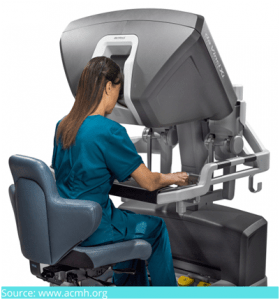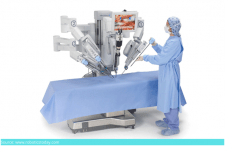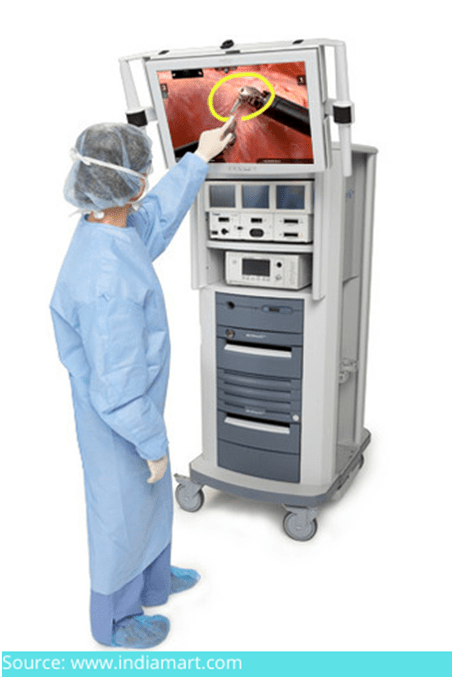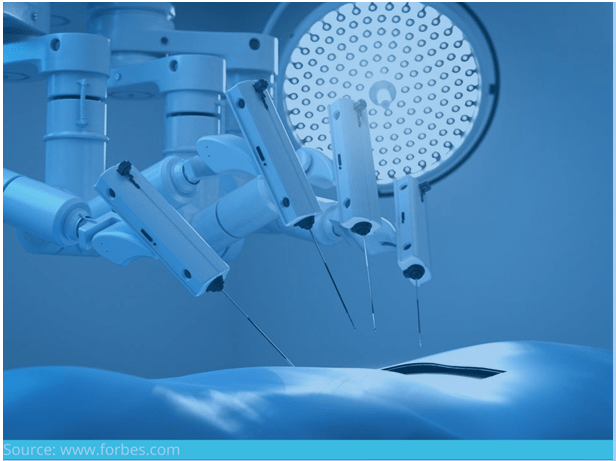For millennia, people have been fascinated by human anatomy and have wanted to learn more about it. And as science advances, more and more sophisticated technology is being developed to be used in treatment procedures, with minimal side-effects and discomfort.
Laparoscopy, for example, is a minimally invasive surgical technique that involves making 1 or more small incisions in your body to allow small tubes, cameras, and devices to pass through, allowing surgeons to operate without having to open the body.
According to Dr. Harsh Sheth, an eminent weight loss surgeon in Mumbai, robotic surgery has been emerging in the past few decades because it overcomes some obstacles of traditional laparoscopy.
In this blog, we shall understand what robotic surgery is, its advantages, and its disadvantages.
What exactly is robotic surgery?

Acclaimed bariatric surgeon in Mumbai, Dr. Harsh Sheth, points out that robotic surgery, also known as robot-assisted surgery, enables doctors to conduct a wide range of complex techniques with greater precision, flexibility, and control than traditional approaches allow.
This is due to the assistance of the da Vinci system – a robotic platform that enhances their functionality and helps them overcome several limitations of the traditional minimally invasive procedures.
What is the da Vinci system?
Surgeon console

Patient cart

Vision cart

What are the surgeries performed using the da Vinci system?
The FDA has cleared the da Vinci Surgical System for use in a variety of procedures, including:
- Head and neck: Mouth and throat surgery.
- Cardiac: Used instead of open heart surgery when necessary.
- General surgery: Covering a wide range of procedures, like inguinal hernia repair.
- Colorectal: Rectopexy, Colon, and rectal resection.
- Gynecology: Benign hysterectomy.
- Urology: Surgeries involving the kidney or prostate.
- Thoracic: For lung cancer.
What are the advantages of robotic surgery?
Minimally invasive procedure
Incisions are smaller than traditional surgery because surgeons do not use their hands to gain direct access to the body. In addition, the robotic arms filter out vibrations or tremors in the surgeon’s hands, reducing the risk of unintended scratches or punctures, which can lead to bleeding and infections.
Robotic surgery is an excellent choice for body parts that are difficult to reach. Such areas require more extensive incisions for the surgeons to see what they are doing clearly. Larger cuts would make the surgery riskier as some vital blood vessels and other organs may be in the surrounding area.
Faster recovery
Everybody is different and their healing time varies depending on their circumstances. However, most people are ready to commence their normal activities, including work, within a few weeks post a robotic surgery.
You will save money on the typical high expenditures of inpatient stay in the hospital and go back to your everyday life faster if you have a shorter recovery time. Also, you will have less scarring when you recuperate because there is less damage to the body.
Less blood loss and pain
During robotic surgery, blood loss is minimal, and blood transfusions are rarely required. Blood loss might cause difficulties in other surgery, resulting in even prolonged recovery periods.
Reduced risk of infection
Any surgical operation carries the danger of infection, which can prolong your healing and keep you hospitalized longer. Infection is more likely in some sections of the body than others, especially when substantial areas of your body are exposed owing to extensive incisions. However, since robotic surgery requires much less intrusion, the danger of infection is lowered, allowing you to avoid the difficulties that accompany infections.
The surgeon is not under too much stress
What are the disadvantages of robotic surgery?
Robot-assisted surgery has the following drawbacks:
It is expensive
Not easily accessible
As it is an expensive system to procure and maintain, it is only available at centers having the funds to acquire this technology and have highly qualified and trained surgeons.
Latency in Movement
If any complications arise, your surgeon might have to switch to open surgery with larger incisions.
Robotic surgery takes more time
Some studies have revealed that robotic-assisted procedures take longer than conventional open surgeries, around 30 minutes more than laparoscopic surgery, and over an hour longer than open surgery.
Longer surgery times come with their own set of dangers, such as a delayed recovery from anesthesia and a higher risk of blood clots and pneumonia.
Risk of nerve injury
Researchers discovered that approximately 7% of people who had robot-assisted urologic surgery suffered from nerve injuries that side effects of the surgery could have caused. While most people who reported nerve damage recovered within 1 month of surgery, more than 20% had difficulties that lasted longer than 6 months.
Is robotic surgery right for you?
Not everyone is a candidate for robotic surgery. Do not hesitate to discuss the advantages and disadvantages of robotic surgery with an exceptionally competent bariatric surgeon like Dr. Harsh Sheth. You can speak with him to understand how robotic surgery compares to other techniques such as various kinds of minimally invasive surgical procedures and traditional open surgery.
With over 10 years of expertise, Dr. Harsh Sheth is among Mumbai’s leading bariatric surgeons and has extensive knowledge about various advanced surgical procedures.
Conclusion
The last decade has seen a surge in the number of robot-assisted surgeries and publications devoted to robotic-assisted minimally invasive procedures.With extensive training, the right skill, and technological advancement, the benefits can gradually overcome the drawbacks.
Renowned laparoscopic surgeon Dr. Harsh Sheth says that communication latency is presently the most challenging barrier to overcome before this technology can gain traction in the medical sector. Even if the procedure’s expense slows its implementation in hospitals, robotic operations appear to be growing in prevalence. With more research and advancement, robotic surgery can become commonplace with more accurate microsurgeries and increased precision.
If you or your loved one has to go through a bariatric procedure, please schedule an appointment with Dr. Harsh Sheth, one of the best bariatric surgeons in Mumbai.
He is highly skilled in performing advanced splenectomy, laparoscopic GI, Hepato Pancreato Biliary (HPB), hernia, and Abdominal Wall Reconstruction (AWR) surgery. He is well-known and respected for providing safe, high-quality, and cost-effective solutions.

